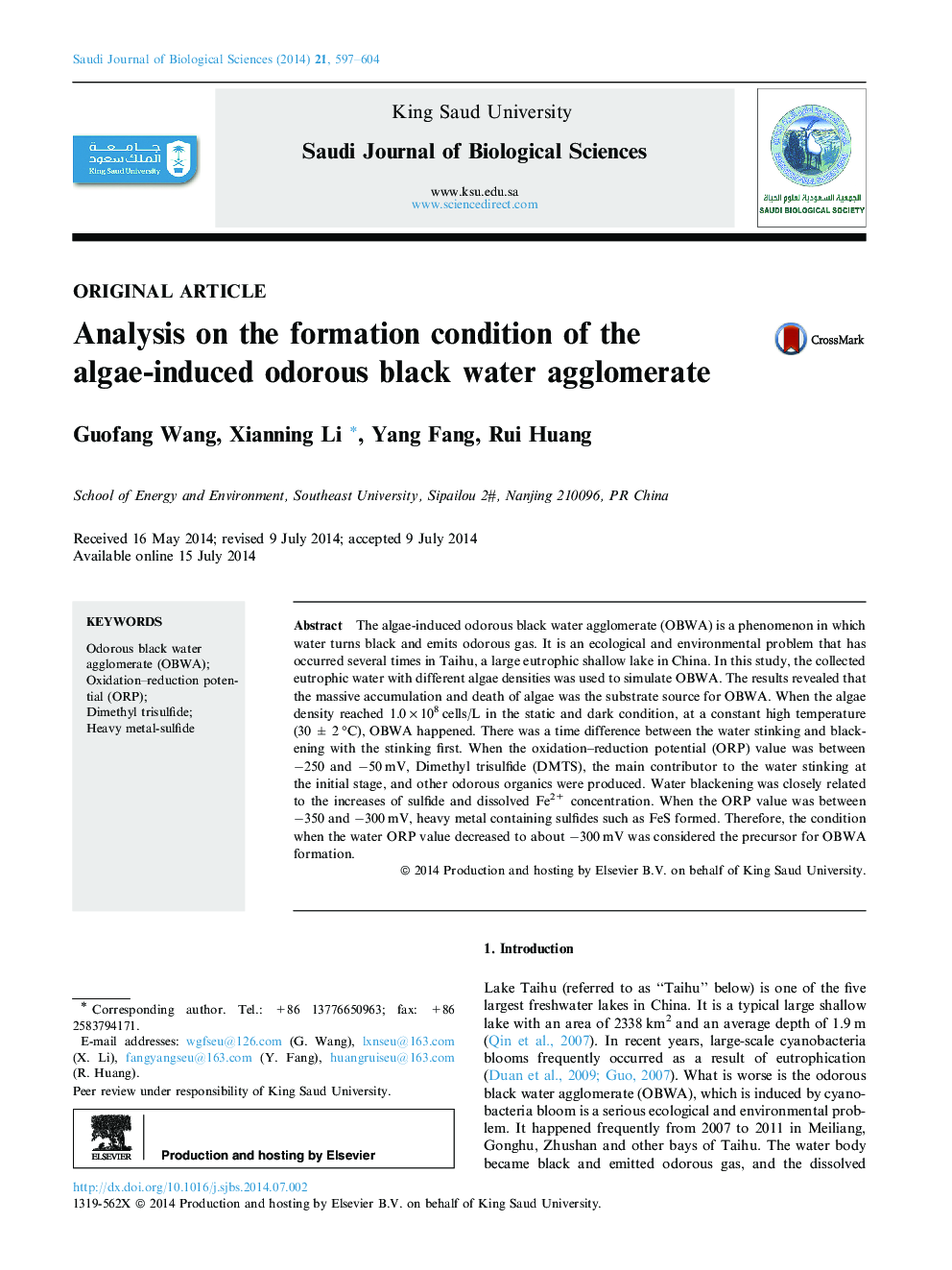| کد مقاله | کد نشریه | سال انتشار | مقاله انگلیسی | نسخه تمام متن |
|---|---|---|---|---|
| 4406450 | 1618682 | 2014 | 8 صفحه PDF | دانلود رایگان |
The algae-induced odorous black water agglomerate (OBWA) is a phenomenon in which water turns black and emits odorous gas. It is an ecological and environmental problem that has occurred several times in Taihu, a large eutrophic shallow lake in China. In this study, the collected eutrophic water with different algae densities was used to simulate OBWA. The results revealed that the massive accumulation and death of algae was the substrate source for OBWA. When the algae density reached 1.0 × 108 cells/L in the static and dark condition, at a constant high temperature (30 ± 2 °C), OBWA happened. There was a time difference between the water stinking and blackening with the stinking first. When the oxidation–reduction potential (ORP) value was between −250 and −50 mV, Dimethyl trisulfide (DMTS), the main contributor to the water stinking at the initial stage, and other odorous organics were produced. Water blackening was closely related to the increases of sulfide and dissolved Fe2+ concentration. When the ORP value was between −350 and −300 mV, heavy metal containing sulfides such as FeS formed. Therefore, the condition when the water ORP value decreased to about −300 mV was considered the precursor for OBWA formation.
Journal: Saudi Journal of Biological Sciences - Volume 21, Issue 6, December 2014, Pages 597–604
